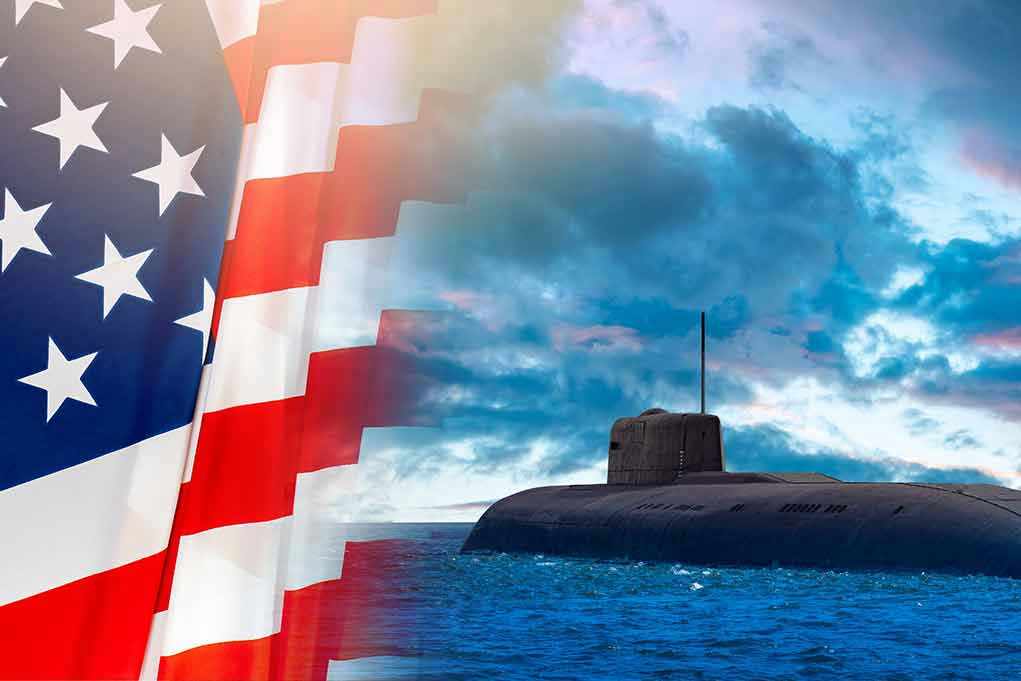
The world watches anxiously as Trump positions nuclear submarines near Russia, prompting a chilling response from Putin and China.
Story Overview
- Trump orders nuclear submarines deployed in reaction to Russian threats.
- Putin and China commence joint military exercises as a counter-signal.
- Escalating tensions raise fears of a broader international conflict.
- Ukraine remains the immediate flashpoint in these geopolitical maneuvers.
Nuclear Signaling and Strategic Posturing
In a decisive move, President Donald Trump has ordered the deployment of two nuclear submarines to undisclosed “appropriate regions,” a response to provocative statements from Dmitry Medvedev, Deputy Chairman of Russia’s Security Council. This comes amidst heightened tensions over the ongoing conflict in Ukraine and threats of further US sanctions. The decision underscores the gravity of the situation, as nuclear powers engage in a high-stakes game of strategic posturing.
Medvedev’s statements, warning against ultimatums and hinting at Russia’s nuclear capabilities, prompted Trump’s action. The US President’s ultimatum to Russia—a 10-day deadline for a Ukraine ceasefire—further highlights the escalatory nature of this confrontation. The United States appears resolute in demonstrating its military capabilities, emphasizing the importance of deterring aggression through strength.
Russia-China Military Alliance: A New Dynamic
In retaliation, Russian President Vladimir Putin has initiated large-scale joint military exercises with China. This cooperation signals a deepening alliance between the two nations, united in opposition to US influence. The joint exercises represent a show of force, with both countries aiming to counterbalance the perceived threat posed by the United States’ military positioning.
The growing Russia-China partnership raises concerns about the potential for a new axis of power. As both nations continue to align strategically and militarily, the implications for global stability and security become increasingly significant. The Ukraine conflict serves as a catalyst for these developments, with the potential for further escalation looming large.
Implications and Global Reactions
The deployment of nuclear submarines and joint military exercises between Russia and China have far-reaching implications. In the short term, the risk of military miscalculation increases, elevating nuclear alert levels and deteriorating US-Russia and US-China relations. Long-term consequences could include a new arms race and the solidification of the Russia-China military alliance, posing challenges to global arms control regimes.
Ukraine remains at the center of this geopolitical chessboard, with the conflict showing no signs of resolution. European nations face heightened security concerns, while the global community grapples with the elevated risk of nuclear escalation. The economic impact is also significant, with markets reacting to increased geopolitical risk and defense spending on the rise.
Expert Opinions and Analysis
Experts express concern over the potential for unintended escalation. Professor Paul Morcraft warns that Trump’s actions could backfire, escalating the “balance of terror” and increasing the risks associated with nuclear signaling. The Nuclear Threat Initiative also highlights the dangers of public nuclear threats, emphasizing the need for careful crisis management to avoid catastrophic outcomes.
While some analysts view Trump’s move as a negotiating tactic designed to pressure Russia into compliance, others caution that it raises the risk of miscalculation and unintended consequences. As the situation unfolds, the importance of diplomatic engagement and de-escalation measures becomes increasingly clear.












